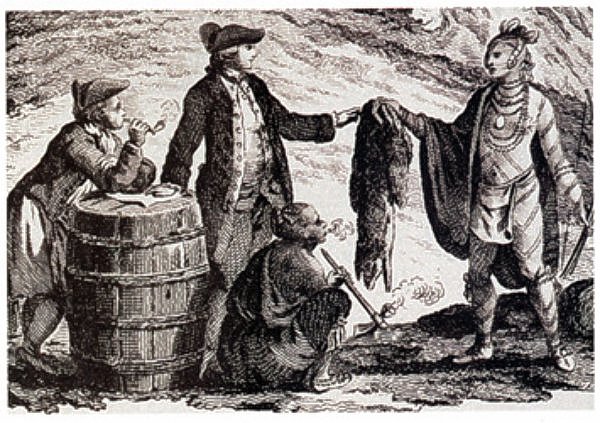
Materials required: logbook, projector, whiteboard
In pairs, have students write a short play about some of the problems of the fur trade:
- French or English trader wants to trade for furs, with a Waponahkew – Wabanaki man or woman (Mi’kmaq, Passamaquoddy or Wolastoqewiyik) who wants a gun.
- The trader has offered a broken gun that needs fixing before it can be used.
- The Waponahkew (Wabanaki man or woman) does not have enough furs to pay for the gun.
- Have the two authors say the following words out loud and then add the appropriate punctuation: So, Go away, Gimme, It’s broken, Please, That’s too much, I can’t understand what you are saying, You owe me.
- Give each student a piece of lined paper. Tell them to skip the top three lines. To the left of the margin on the fourth line, print a capital letter (A to Z). Now place a colon to the right of the letter, choose one of the short openers listed above and write it after the colon. [K: Go away!] The capital letter stands for a person, and the colon indicates speech.
- Skip another line and print another capital letter. This stands for the second character. Make a response. [R: Can’t leave until I get some food.]
- Think about your characters. Are they nice to each other? Is there a conflict between them? What’s their relationship?
- Have one or both characters perform some action without speaking. Rewrite the action inside parentheses, and indent [(K goes to the window to look outside)].
In writing this short piece, you have used characters, dialogue, action and setting.
Now have the students present their plays to the class. Discuss the problems these events might cause. How did people playing these roles expect to be understood?




